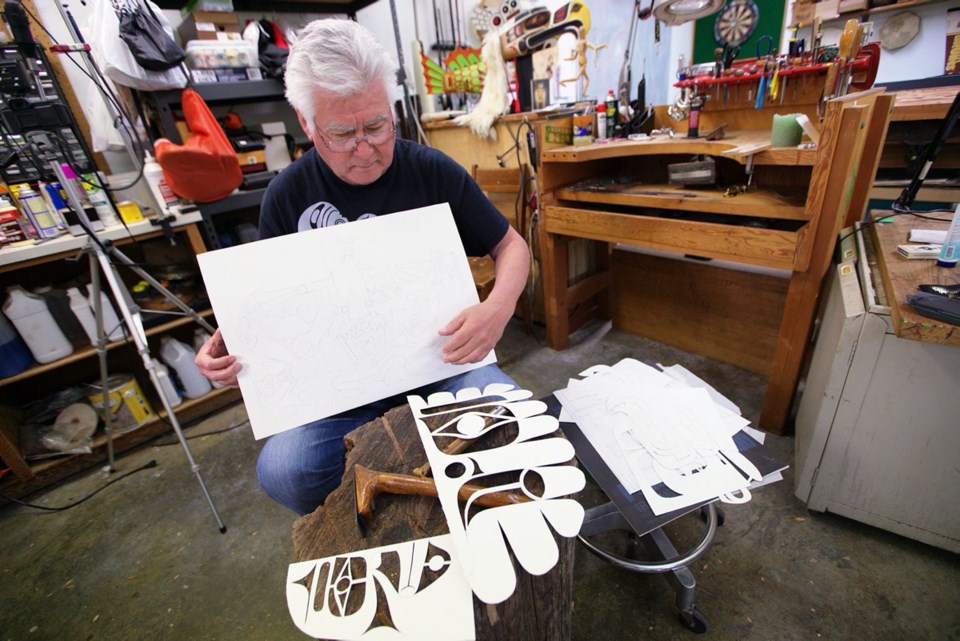A First Nations artwork carved from 500-year-old wood is the new centrepiece at a seaplane terminal at the Inner Harbour.
Kwakiutl carver Richard Hunt, one of Canada’s leading aboriginal artists, created the seven-by-10 foot wall plaque. The red cedar artwork will be unveiled tonight at the floating terminal. The facility, servicing Harbour Air and Kenmore Air passengers, opened on April 4.
“It’s already hung. It looks absolutely beautiful,” Randy Wright, vice-president of the Harbour Air group, said Wednesday.
Commissioned by Wright for an undisclosed fee, the carving acknowledges its business benefactor. Images of a beaver and an otter symbolize Harbour Air’s Flying Otter and Flying Beaver restaurants in Victoria and Vancouver. However, most of the interwoven figures in the piece, titled My Family, are a symbolic interpretation of 65-year-old Hunt’s life.
Interviewed at his Victoria workshop, the artist said a bear and eagles depicted in My Family represent the crests of his ancestors. One eagle clutches a salmon, a staple food of Hunt’s people (he was born in Alert Bay in 1951). Thereare also images of a thunderbird, a raven, a killer whale and a moon.
A man’s face peers between one of the eagle’s legs.
“I tried to make it so it looks like me,” Hunt said, grinning. “What do you think?”
A former chief carver at the Royal British Columbia Museum, Hunt’s accomplishments range from creating designs for the Royal Canadian Mint and the 1994 Commonwealth Games to carving masks and totem poles for international clients. His grandfather was carver Mungo Martin, a seminal figure in Northwest aboriginal art.
Wright, a long-time friend of Hunt’s, said he considers My Family a masterpiece.
The artist said it’s among the most important pieces in his half-century career, partly because it’s a summing up of his life.
It took 60 consecutive days to create My Family, working 51Ú2 hours daily. The physical exertion took a toll on Hunt’s hands, back and legs.
“It was two months of every day work. I’m probably going to take three weeks off now to let my hands heal. The joints are all sore. I’m not a spring chicken any more,” he said. He sourced the wood from a mill in Sooke. Hunt said the first-growth red cedar was a joy to work with because it’s soft and pliable. He’d originally intended to paint My Family — but decided against it because the distinctive wood grain is so beautiful.
Hunt and Wright knew each growing up as teens in Victoria, playing football together.
Hunt began carving when he was 13. As a boy living in James Bay, he and his brothers and sisters used to pick strawberries each summer.
One day, Hunt decided he’d had enough of strawberry picking. He told his mother he wanted to be a carver like his father, Henry Hunt.
In his Victoria workshop — lined with neatly sorted woodworking tools — Hunt painstakingly creates each carving by hand, refusing to source out any work.
“I don’t have anybody roughing it out, sanding, doing anything for me,” he said.
“It’s just the way I’ve been brought up. I don’t want to remember what I signed. I want to remember what I did.”



